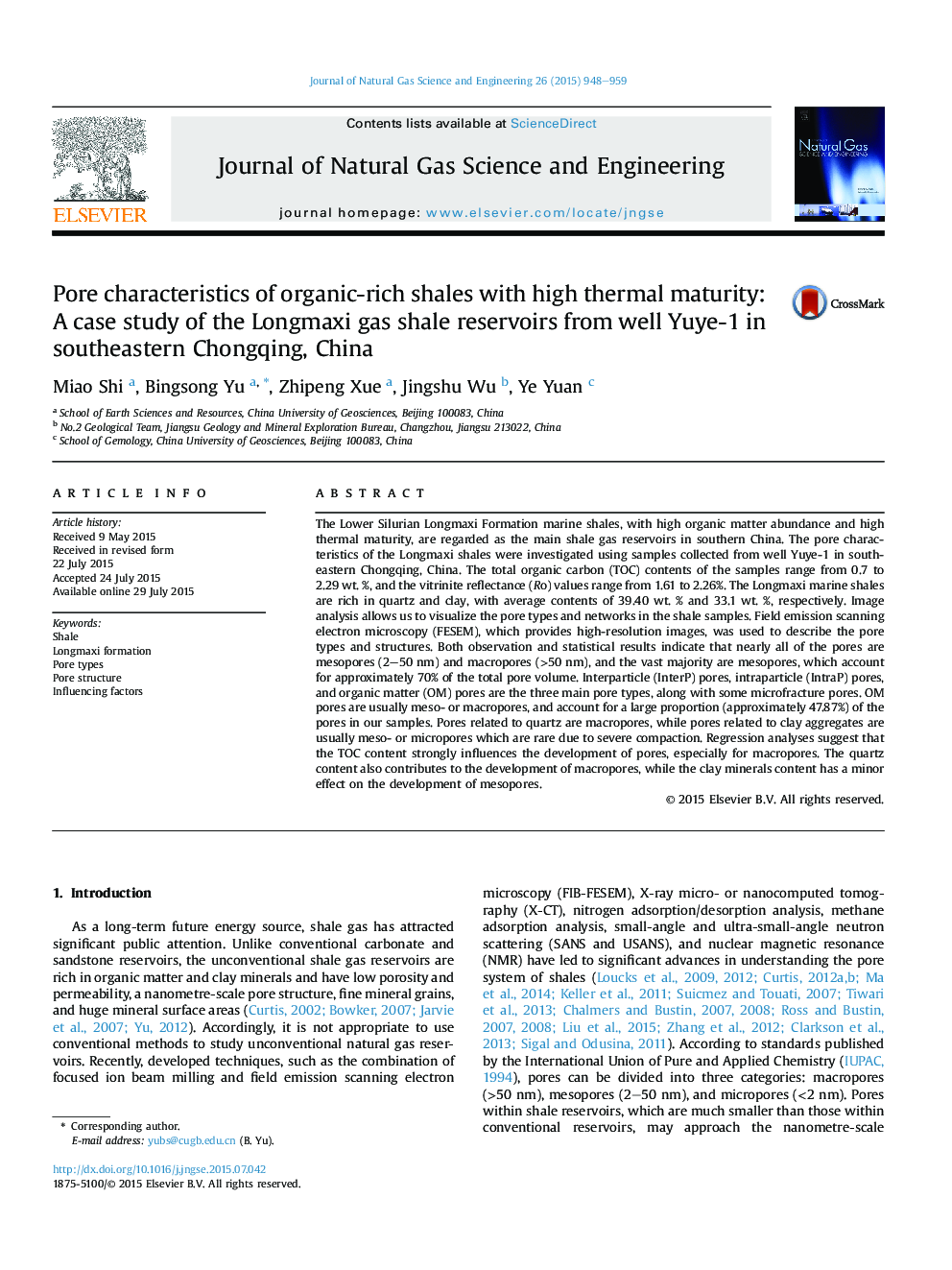| Article ID | Journal | Published Year | Pages | File Type |
|---|---|---|---|---|
| 1757587 | Journal of Natural Gas Science and Engineering | 2015 | 12 Pages |
•We describe pore characteristics of shales, which are all with high thermal maturity in southeastern Chongqing, China.•We extract OM pores in SEM images by imaging software and calculate the proportion of OM pores in all pores.•OM pores are the main pore type when shales are in the high stage of thermal maturity.•We emphasize the important role of TOC content in the development of pores for shales with high thermal maturity.
The Lower Silurian Longmaxi Formation marine shales, with high organic matter abundance and high thermal maturity, are regarded as the main shale gas reservoirs in southern China. The pore characteristics of the Longmaxi shales were investigated using samples collected from well Yuye-1 in southeastern Chongqing, China. The total organic carbon (TOC) contents of the samples range from 0.7 to 2.29 wt. %, and the vitrinite reflectance (Ro) values range from 1.61 to 2.26%. The Longmaxi marine shales are rich in quartz and clay, with average contents of 39.40 wt. % and 33.1 wt. %, respectively. Image analysis allows us to visualize the pore types and networks in the shale samples. Field emission scanning electron microscopy (FESEM), which provides high-resolution images, was used to describe the pore types and structures. Both observation and statistical results indicate that nearly all of the pores are mesopores (2–50 nm) and macropores (>50 nm), and the vast majority are mesopores, which account for approximately 70% of the total pore volume. Interparticle (InterP) pores, intraparticle (IntraP) pores, and organic matter (OM) pores are the three main pore types, along with some microfracture pores. OM pores are usually meso- or macropores, and account for a large proportion (approximately 47.87%) of the pores in our samples. Pores related to quartz are macropores, while pores related to clay aggregates are usually meso- or micropores which are rare due to severe compaction. Regression analyses suggest that the TOC content strongly influences the development of pores, especially for macropores. The quartz content also contributes to the development of macropores, while the clay minerals content has a minor effect on the development of mesopores.
